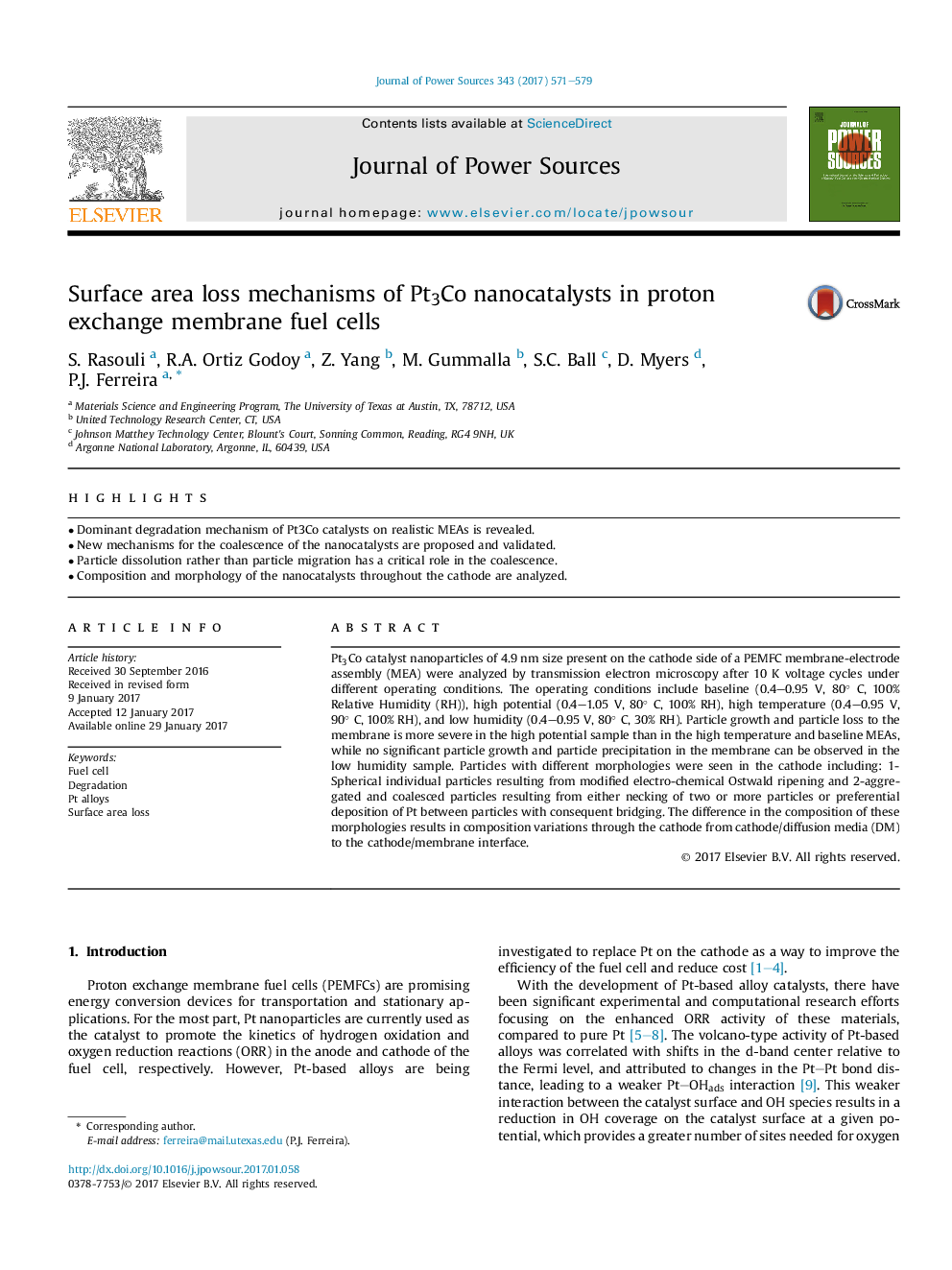| Article ID | Journal | Published Year | Pages | File Type |
|---|---|---|---|---|
| 5149456 | Journal of Power Sources | 2017 | 9 Pages |
Abstract
Pt3Co catalyst nanoparticles of 4.9 nm size present on the cathode side of a PEMFC membrane-electrode assembly (MEA) were analyzed by transmission electron microscopy after 10 K voltage cycles under different operating conditions. The operating conditions include baseline (0.4-0.95 V, 80° C, 100% Relative Humidity (RH)), high potential (0.4-1.05 V, 80° C, 100% RH), high temperature (0.4-0.95 V, 90° C, 100% RH), and low humidity (0.4-0.95 V, 80° C, 30% RH). Particle growth and particle loss to the membrane is more severe in the high potential sample than in the high temperature and baseline MEAs, while no significant particle growth and particle precipitation in the membrane can be observed in the low humidity sample. Particles with different morphologies were seen in the cathode including: 1-Spherical individual particles resulting from modified electro-chemical Ostwald ripening and 2-aggregated and coalesced particles resulting from either necking of two or more particles or preferential deposition of Pt between particles with consequent bridging. The difference in the composition of these morphologies results in composition variations through the cathode from cathode/diffusion media (DM) to the cathode/membrane interface.
Keywords
Related Topics
Physical Sciences and Engineering
Chemistry
Electrochemistry
Authors
S. Rasouli, R.A. Ortiz Godoy, Z. Yang, M. Gummalla, S.C. Ball, D. Myers, P.J. Ferreira,
